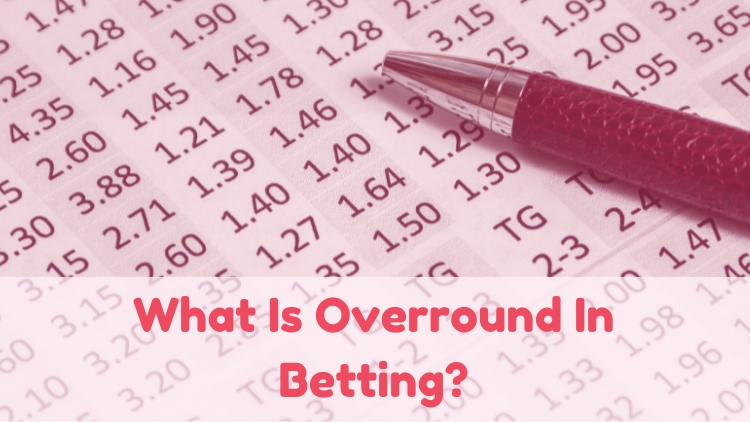
Ever wondered how bookmakers always seem to make a profit? The answer often lies in a little-known concept called "overround". Whether you're new to betting or simply curious, understanding overround can shed light on how odds are set and how bookies ensure they come out ahead.
In simple terms, overround is the bookmaker's margin built into the odds. It's a way for bookmakers to make sure they make money, no matter the outcome of a sporting event.
In this blog post from Dove Casino, we'll break down what overround means, how it's calculated, and why it's important for bettors. By the end, you'll have a clear understanding of how this affects your bets and potential winnings.
What Does Overround Mean In Betting?
If you place a bet, the odds reflect the probability of different outcomes. However, these odds also include the bookmaker's margin, which is known as the overround.
Think of overround as a built-in cushion for the bookmaker. This ensures that whatever the outcome of the event, the bookmaker makes a profit. This is done by adjusting the odds slightly in their favour.
For example, in a coin toss, the true odds of either heads or tails are 50% or 2.0 in decimal odds. A bookmaker might offer odds of 1.9 for each side. Those slightly lower odds create the overround.
The overround is calculated by adding up the implied probabilities of each outcome. In a fair market, the total would be 100%. However, with overround, the total usually exceeds 100%. This extra percentage is the bookmaker's margin.
Understanding this can help you make more informed bets, as you'll be aware of the bookmaker's edge in their pricing.
How Do You Calculate Overround In Betting?
Calculating overround might sound tricky, but it's straightforward once you know the steps. Here's a simple way to do it:
Start by converting the odds of each possible outcome into their implied probabilities. In decimal odds, you do this by dividing 1 by the decimal odds.
For example, if the odds are 2.0 for one outcome, the calculation would be 1 ÷ 2.0 = 0.5 or 50%.
Next, add up all these implied probabilities. For a fair market, the total should be 100%. However, because of overround, the total will be higher.
Let's look at a two-outcome event with odds of 1.9 for both outcomes:
For the first outcome: 1 ÷ 1.9 = 0.5263, or about 52.63%
For the second outcome: 1 ÷ 1.9 = 0.5263, or about 52.63%
Add these probabilities together: 52.63% + 52.63% = 105.26%
The overround is the amount over 100%, so in this example, it's 105.26% - 100% = 5.26%. This 5.26% is the bookmaker's margin.
Understanding how to calculate overround helps you see the built-in profit the bookmaker expects, giving you a better idea of the true value of your bet.
How Do You Remove Overround From Odds?
Removing overround from odds gives you the "true" probabilities of each outcome. Here's how you can do it:
First, you need the implied probabilities of each outcome, including the overround. To find these, divide 1 by each of the decimal odds, just like we did in the section above.
Remember, the total implied probabilities should be higher than 100% due to the overround.
Next, calculate the total implied probability by adding up all the individual probabilities. For example, if the total is 108%, then the overround is 8%.
To remove the overround, divide each implied probability by the total implied probability percentage in decimal form. In this case, 1.08 (108% expressed as a decimal).
For example:
For 52.63%: 52.63 ÷ 1.08 = 48.74%
For 45.45%: 45.45 ÷ 1.08 = 42.08%
Finally, convert these "true" probabilities back into decimal odds by dividing 1 by the probability in decimal form.
For 48.74%: 1 ÷ 0.4874 ≈ 2.05
For 42.08%: 1 ÷ 0.4208 ≈ 2.38
These adjusted odds give you a clearer picture of the real likelihood of each outcome, free from the bookmaker's margin.
What Is The Average Overround In Horse Racing?
In horse racing, the overround can vary, but there's a general range you can expect. On average, the overround in horse racing is typically around 10-20%, depending on the number of horses and the bookmaker.
This means that the total implied probabilities of all possible outcomes will usually add up to something between 110% and 120%. This is higher than the 100% that would represent a fair market.
For instance, if there are numerous horses in a race, the combined overround might be closer to 20%. Conversely, in races with fewer participants, you might see the overround closer to 10%.
It's good to know this, as it can affect the potential returns on your bets. A higher overround means the bookmaker has a bigger margin, which can slightly lower your potential winnings.
Being aware of the average overround helps you better understand the value you're getting if placing a bet on a horse race. Remember to always gamble responsibly and only place bets you are comfortable with, bearing in mind that winning is never a sure thing.
